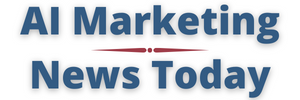On Saturday morning, 5 April, there will be a live recording of The Minefield at the ABC Ultimo, as part of a collaboration between Radio National and ABC Education called “A Week with Students”. Waleed Aly, Scott Stephens and guest Damian Maher will discuss the question “Is AI a technology to be feared, or a tool to be taught?”, with an audience of secondary school students, teachers and parents. You can learn more details and register your interest to attend on Eventbrite.
—
Ever since the release of the Australian Framework for Generative AI in Schools at the end of 2023, tools utilising artificial intelligence have begun to be introduced into schools in a number of states. These tools have undeniable educational benefits, but their use also presents a number of challenges for educators and students.
Digital literacy gaps
Many students are not yet equipped with the digital literacy skills needed to effectively interact with AI tools. They may struggle to craft effective prompts, evaluate the relevance and accuracy of AI-generated responses, or understand how to use AI in ways that support — not replace — their learning. These gaps can widen existing learning inequalities.
Over-reliance on AI
While AI can be a helpful support tool, some students may begin to rely on it for completing tasks without fully engaging in the learning process. This can lead to shallow understanding, reduced motivation to learn independently, and diminished creativity, critical thinking and problem-solving abilities. In extreme cases, it may also discourage persistence and resilience in learning.
Misunderstanding AI capabilities
Students may believe that AI always provides correct, up-to-date information. They may not understand how AI models are trained or the limitations of these systems. This can result in misplaced trust, poor judgement when using AI outputs, and confusion between AI-generated content and verified academic sources.
Bias and misinformation
AI tools can unintentionally perpetuate bias or generate inaccurate information based on the data they were trained on. Without strong information literacy skills, students might not detect stereotypes, cultural insensitivity or factual errors in AI responses, leading to flawed assignments or reinforcement of harmful ideas. This concept is particularly important in Australia, which has a culturally diverse student population.
Ethical and academic integrity concerns
AI tools can generate essays, solve problems or answer exam questions — making it tempting for students to use them inappropriately. This poses challenges around plagiarism, cheating and the authenticity of student work. Studies have indicated that the overall rate of student cheating has remained relatively stable, even with the advent of generative AI tools like ChatGPT. Many students may not fully understand what constitutes ethical use of AI, especially in the absence of clear school policies or guidance.
Access and equity
There are significant differences in students’ access to AI tools based on socio-economic status, geographic location and school infrastructure. While some students may have AI integrated into their daily learning, others may have limited or no access, contributing to a growing digital divide and unequal learning opportunities.
Privacy and data security
Students may inadvertently share personal data with AI tools or use platforms without understanding the privacy implications. Younger students, in particular, may not be aware of how their data is collected, stored or used, creating risks around digital safety, consent and exposure to potentially harmful online environments.
Other issues related to ethics include ways students are using AI outside of school contexts. An example of this is where students use AI to create deepfake pornography.
Want the best of Religion & Ethics delivered to your mailbox?
Sign up for our weekly newsletter.
Guidance from teachers
Many teachers are still learning how to integrate AI into the classroom. Without structured support or guidelines, students may use AI in ways that are inconsistent, inappropriate or not aligned with learning goals. Clear instruction is needed to help students use AI effectively, ethically and responsibly. Many schools around Australia are starting to create frameworks to guide teacher and student use in schools. Until these frameworks are in place, teachers will be required to use their judgement in consultation with other teachers and school leaders.
While there are a number of challenges that have been presented here, I would stress that it is important for schools to incorporate AI into their curriculum so that they can support students’ understanding of AI, both for academic and social purposes. This is an important aspect of digital literacy. AI tools are evolving at a rapid rate, so it is important students, teachers and education systems continue to discuss both the advantages and challenges of the use of AI.
Damian Maher is a Senior Lecturer in Initial Teacher Education at the University of Technology Sydney.
Posted 31 Mar 202531 Mar 2025Mon 31 Mar 2025 at 1:59am, updated 4h ago4 hours agoWed 2 Apr 2025 at 8:31pm


